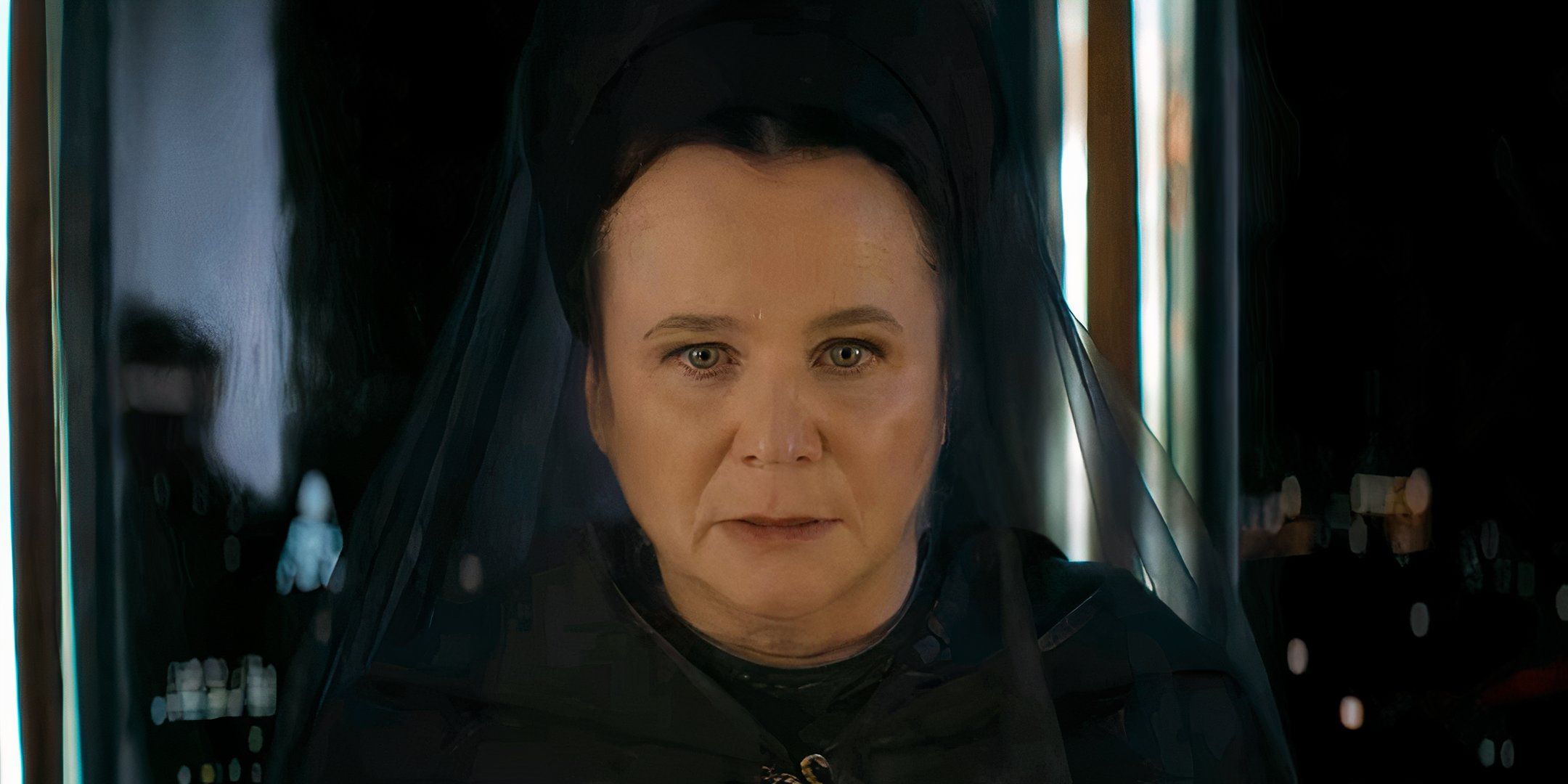
The war against the thinking machines united the Great Houses against a common foe. Valya Harkonnen reveals in the early scenes of Dune: Prophecy that while an Atredies soldier was credited for showing valor against the machines, her Harkonnen grandfather deserted the war and was deemed a coward. The Great Houses punished House Harkonnen by sending them to the undesirable planet of Giedi Prime. The first Mother Reverend Superior Raquella was a hero during the wars against the machines and later trained the Sisters of the Bene Gesserit to become Truthsayers. This led to the Bene Gesserit becoming powerful tools for all of the Great Houses and allowed Raquella to govern the future.
New episodes of Dune: Prophecy release every Sunday at 9 PM on HBO & MAX.
What Caused The Machine War In Dune
Men with powerful machines aimed to enslave humanity

The war against the thinking machines in the Dune universe is also known as the Butlerian Jihad. The Butlerian Jihad, “also known as the Great Revolt as well as commonly shortened to the Jihad, was the crusade against computers, thinking machines, and conscious robots that began in 201 BG and concluded in 108 BG” (via Dune Wiki). The machines were driven by artificial intelligence and ultimately became a hindrance to the development of humankind. Humanity’s dependence on these advanced technologies, which were much more sophisticated than modern-day AI, led to the desire to exterminate all machines once and for all.
The point of the war against the thinking machines is summed up in Frank Herbert’s Dune novel. “Once men turned their thinking over to machines in the hope that this would set them free. But that only permitted other men with machines to enslave them.” Since Dune is set in a distant future, Herbert was able to avoid making his universe revolve around issues of technology and instead allowed the narrative to dive into more philosophical realms with the feudal-esque structure. None of the Dune books discuss the Butlerian Jihad at great length but it is mentioned in both Dune and Dune: Messiah.
When Dune’s Machine War Took Place
Roughly a century before Dune: Prophecy

The Butlerian Jihad began in 201 BG (Before Guild) and concluded in 108 BG and lasted a total of 93 years. This means that this happened roughly 100 years before the events of Dune: Prophecy and more than 10,100 years before the birth of Paul Atreides. Dune: Prophecy showrunner Alison Schapker told Entertainment Weekly, “The characters in our series exist in the shadow of a war against thinking machines and artificial intelligence, which had basically enslaved or subjugated humankind for an enormous period of time.” After the machines were defeated and destroyed, several new organizations and groups sought to fill the large gap by instilling their own degrees of power and rule, one of them being the Bene Gesserit.
The impact of the wars against the Thinking Machines changed the inner workings of society. Schapker continued, “And in rising up, going to war, and ultimately defeating the machines, humans also came to a brink of their own extinction. There were casualties on planetary levels, and that does something to individual psyches. Brian Herbert and Kevin Anderson in their books really make clear that when it took that much loss of life to have humans basically free themselves, people’s notions of what their role is and what sacrifice means has just really been put on the line in a species-level way.”
“Thinking Machines” In Dune Explained
They were highly advanced computers in the book

Thinking Machines were highly sophisticated computers but did not have any consciousness and were therefore not sentient beings. They were incredibly smart and powerful computers that humankind had become dependent on, which made them wildly dangerous. Herbert wasn’t exactly clear about what the Thinking Machines looked like in his original canon novels. However, his son Brian and his writing partner Kevin J. Anderson were the ones who popularized the notion that the Thinking Machines were actually giant robots with weapons. Herbert’s original concept made the thinking machines more akin to highly advanced computers and phones rather than actual militant monsters.
The destruction of the Thinking Machines sparked the creation of people known as Mentats, or human computers. While Mentats do not play a large role in Villenueve’s Dune films, they have a much larger role in the book, particularly the Mentat of House Atreides, Thufir Hawat, whose lineage had been Mentats of House Atreides for three generations. Mentats were the only acceptable record-keepers after the destruction of the machines. The young Prince’s robot lizard is an example of a Thinking Machine in Dune: Prophecy or at least a machine that was constructed with similar forbidden technology.
Why “Thinking Machines” Are Banned During The Events Of Dune: Prophecy
The technology once enslaved humankind

The Thinking Machines in Dune: Prophecy became forbidden because of how they were used to enslave humanity by powerful men. This is likely why Mother Reverend and many other Sisters of the Bene Gesserit were so against Raquella’s vision of genetically engineering royal leaders since it would be in the same vein as the men who owned the Thinking Machines playing god. Although humanity would be without the highly advanced technologies after the Butlerian Jihad, they were better off for it on a human level and societies began to rebuild and improve.
While the young Prince’s toy doesn’t appear to be harmful in any way, its technology reminds everyone at the wedding ceremony of the horrors of the 93-year war. It’s seen as a great offense considering how many people were killed during the war and a terrible gesture. The Prince clearly doesn’t care or is uneducated about how devastating the wars were for the people who lived through them even though mankind won in the end. The war against the Thinking Machines provides a crucial context for the world of Dune: Prophecy.


